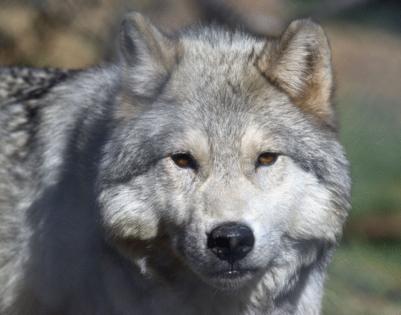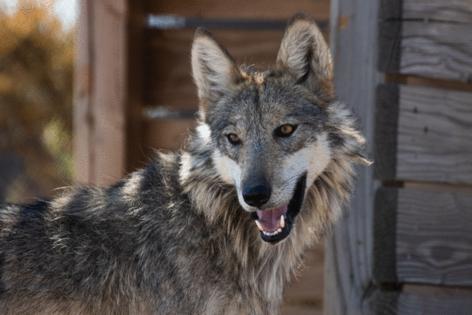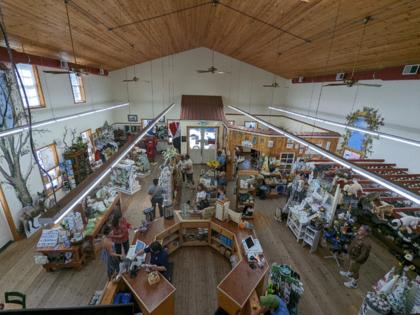Pay a Visit to Majestic Endangered Wolves
By Nicola Bridges
Moving silently, its head hung low with curious eyes peering from a soft face of gray and white fur, a wolf appears from under the low-hanging wild oak trees and moves stealthily toward us, wary of our movements and voices. Another appears ambling behind, this one's coat completely blond, both now sniffing the air.
They sense that visitors mean treats, just as a venison meatball lobbed toward them lands in the nearby scrub. They trot over to enjoy a snack, their long coats quivering in the wind blowing across the mountaintop, their large paws padding the earth, resembling two somewhat timid dogs more than the vicious wild creatures of scary movies.
I'm at the California Wolf Center just a few miles outside of Julian, California, a mountain town just an hour from San Diego where many travel to enjoy pressed cider, apple-picking, pie and the quaint sundry shops. There will be a full moon this night, coincidentally call a "wolf moon," and while I'm here during the day, it feels perfect to be hanging with these endangered wolves.
"Their big bad wolf reputation is a lot of mythos. They're basically scaredy cats," says my host, Ciera MacIsaac, the center's wolf-care and reintroduction biologist. "In the wild wolves want nothing to do with us. They're neophobic, meaning they're scared of new things, especially humans."
Wolf Yana, 10, and her blond daughter, 6-year-old Poppy, are Northwestern gray wolves, two of the center's five ambassador wolves. While Northwestern gray wolves are not on the endangered list, the majority of the center's wolves are Mexican gray wolves, of which there are only about 600 in existence worldwide. Some 241 are in the wild in the United States, just 15 to 20 in their namesake Mexico, 23 that call CWC home and the remaining at accredited facilities. The center educates visitors about their critically endangered status in the wild and the center's reintroduction program of wolves to their native land in the United States and Mexico.
The wolves live a natural life here in large enclosures, enjoying native terrain as they would in the wild, despite getting close to the chain-link fence that separates them from us humans. The rest of the center's 27 wolves, including two additional Northwestern gray wolves, live on land that sprawls across the 50-acre center behind the enclosures.
The CWC is part of the AZA SAFE Mexican Wolf binational recovery program, which stands for Saving Animals From Extinction, cross-fostering pups born at the center and reintroducing them into wild dens at locations tracked by the U.S. Fish and Wildlife Service.
SAFE selects wolf centers yearly to breed for reintroduction based on the genetics of the pack. One mama wolf averages seven to eight pups per litter. These are then transported and introduced into wild-wolf dens in Arizona, New Mexico and Mexico at just one to two weeks old before their eyes open when they're still consuming only mama's milk.
"The SAFE program's slogan is 'Mom Can't Count,'" MacIsaac jokes.
...continued
Copyright 2024 Creators Syndicate, Inc.












